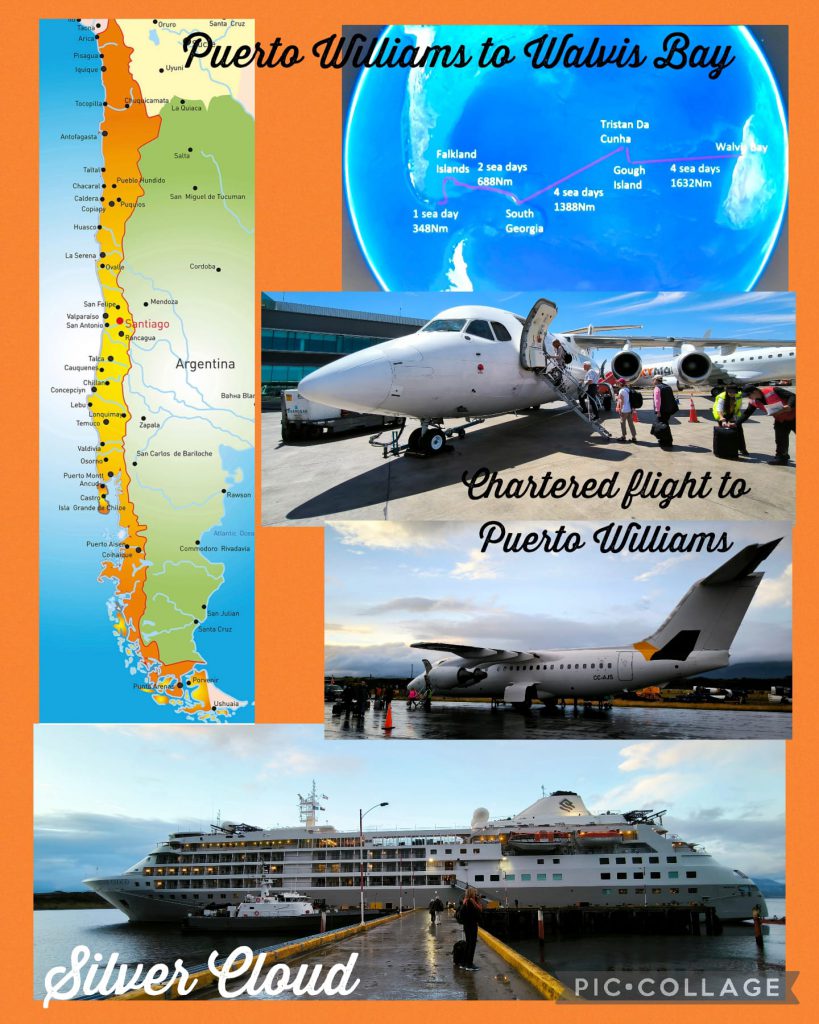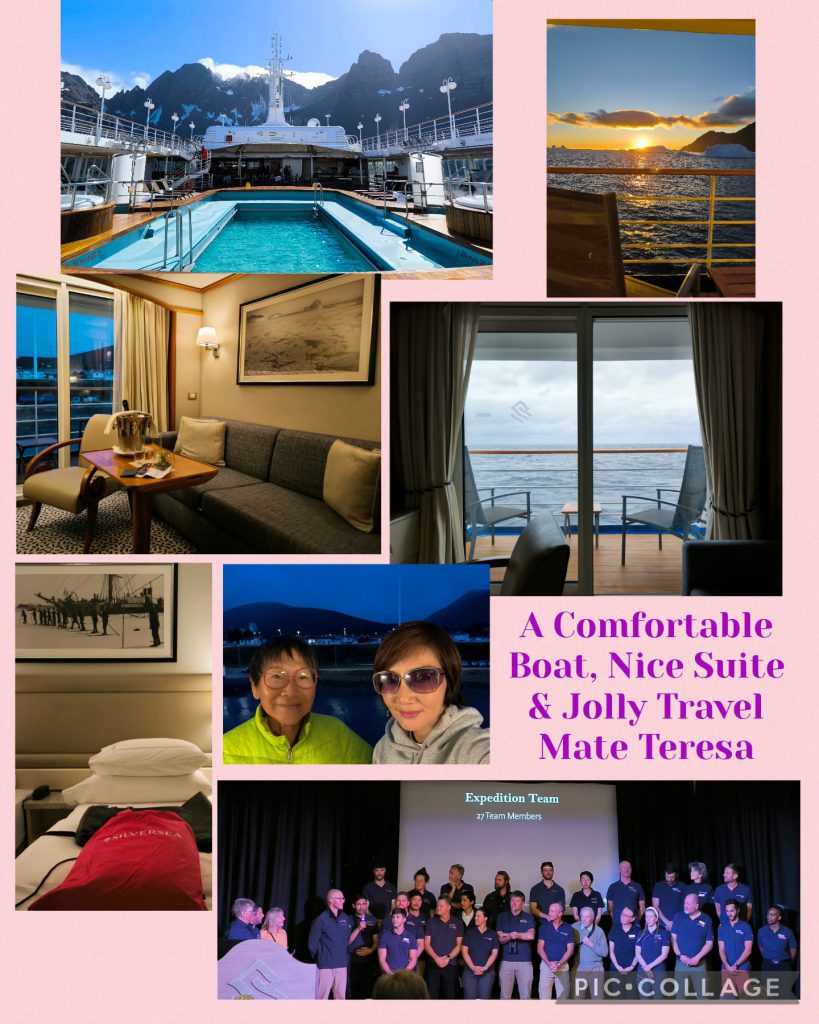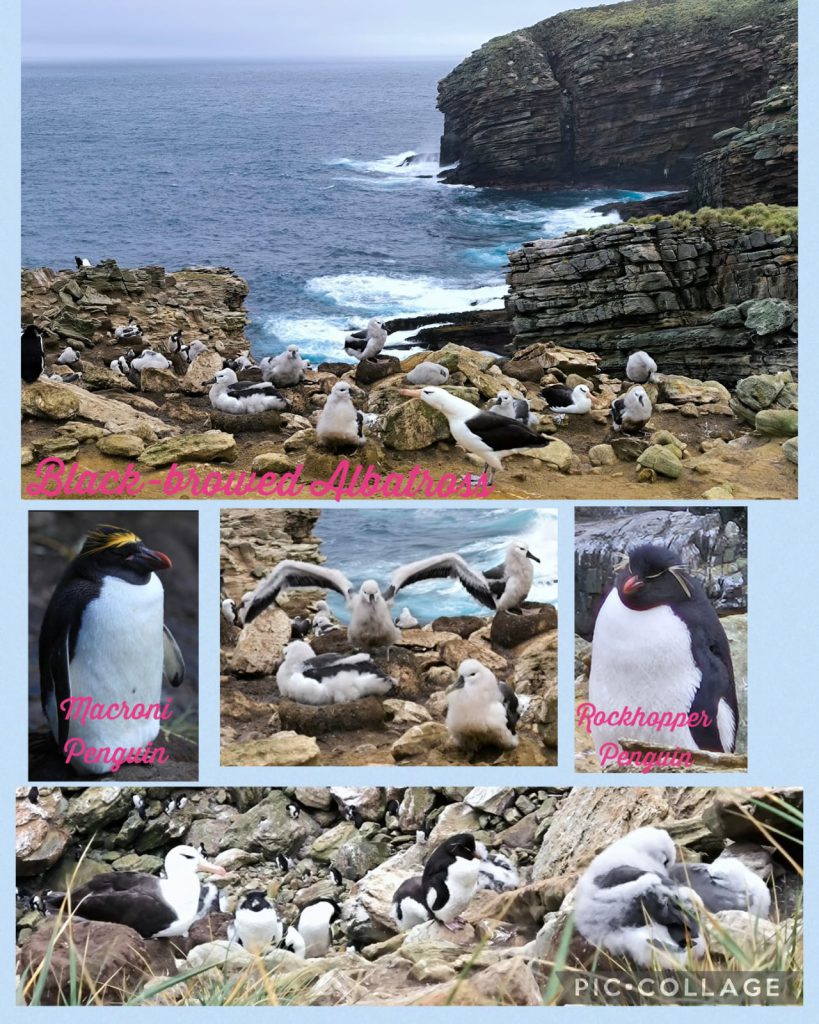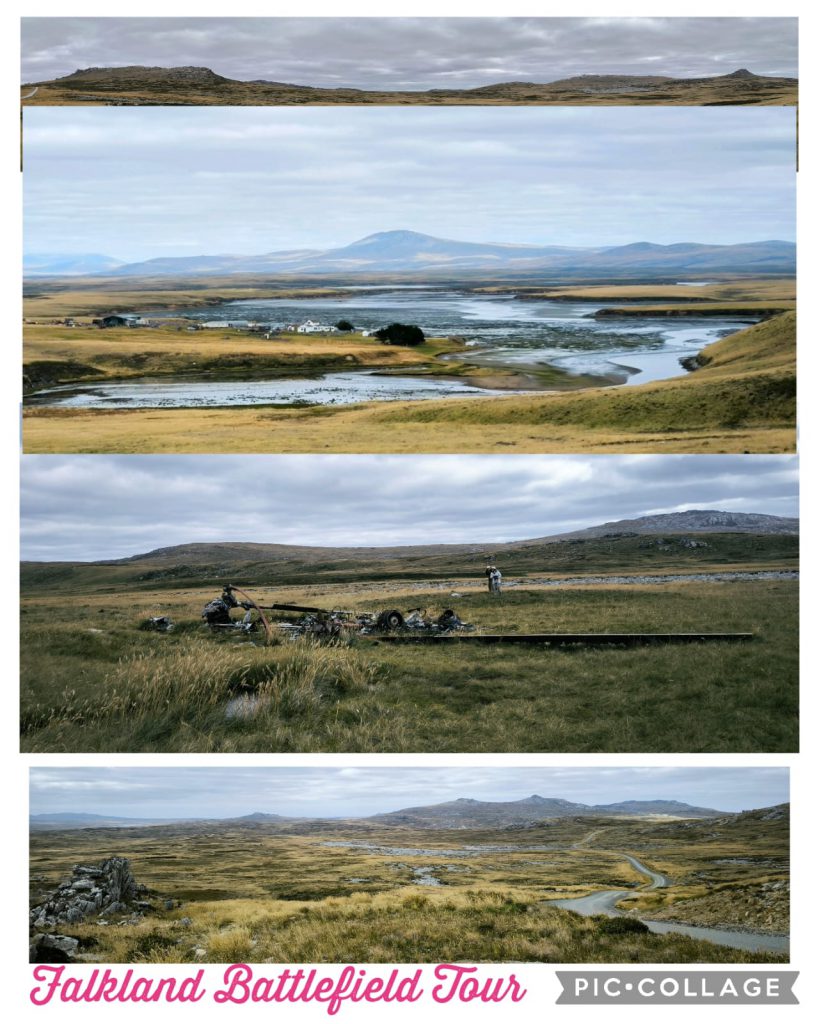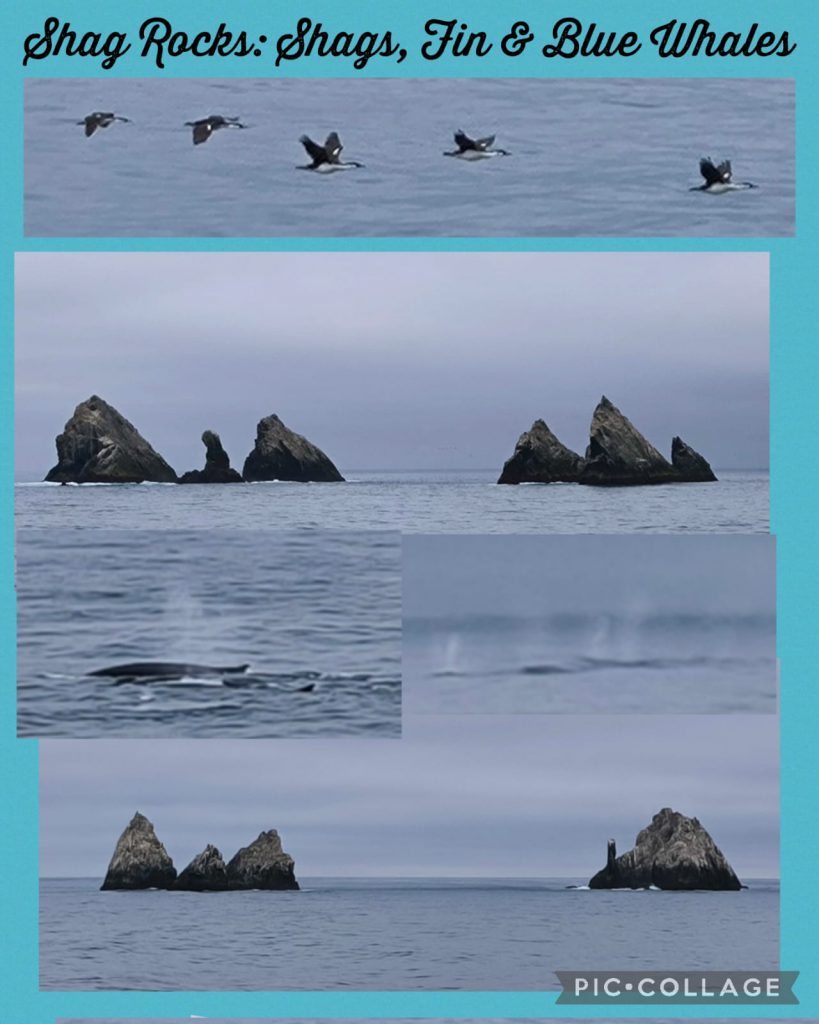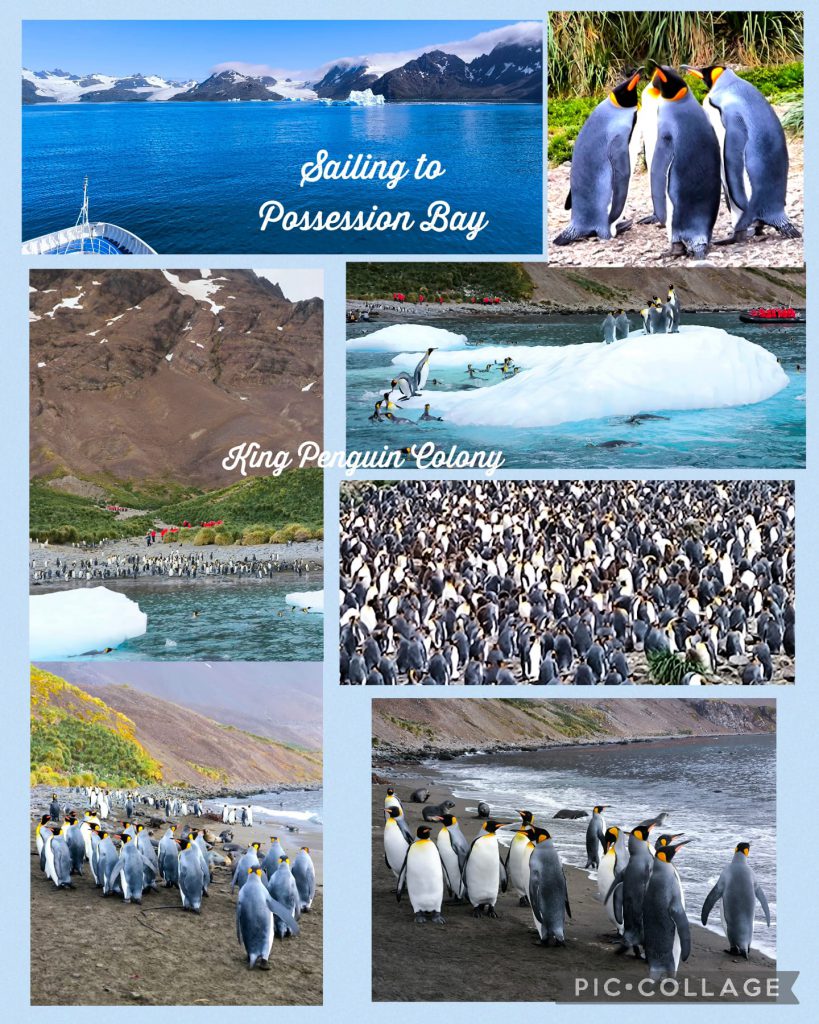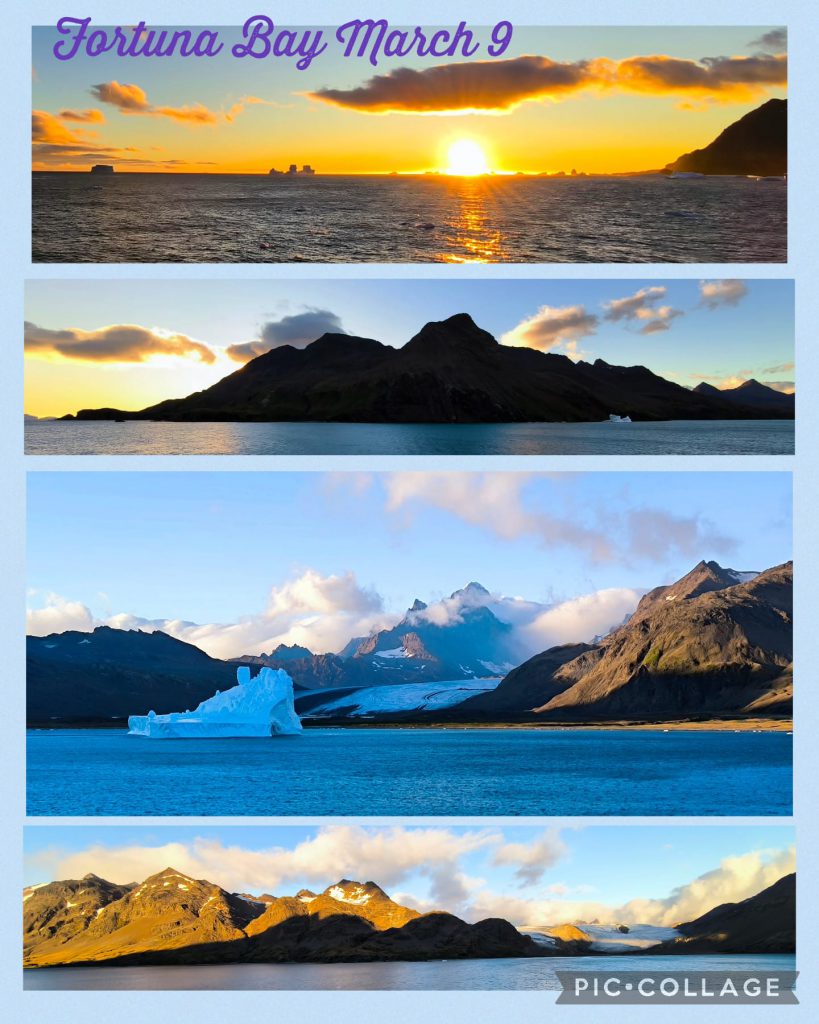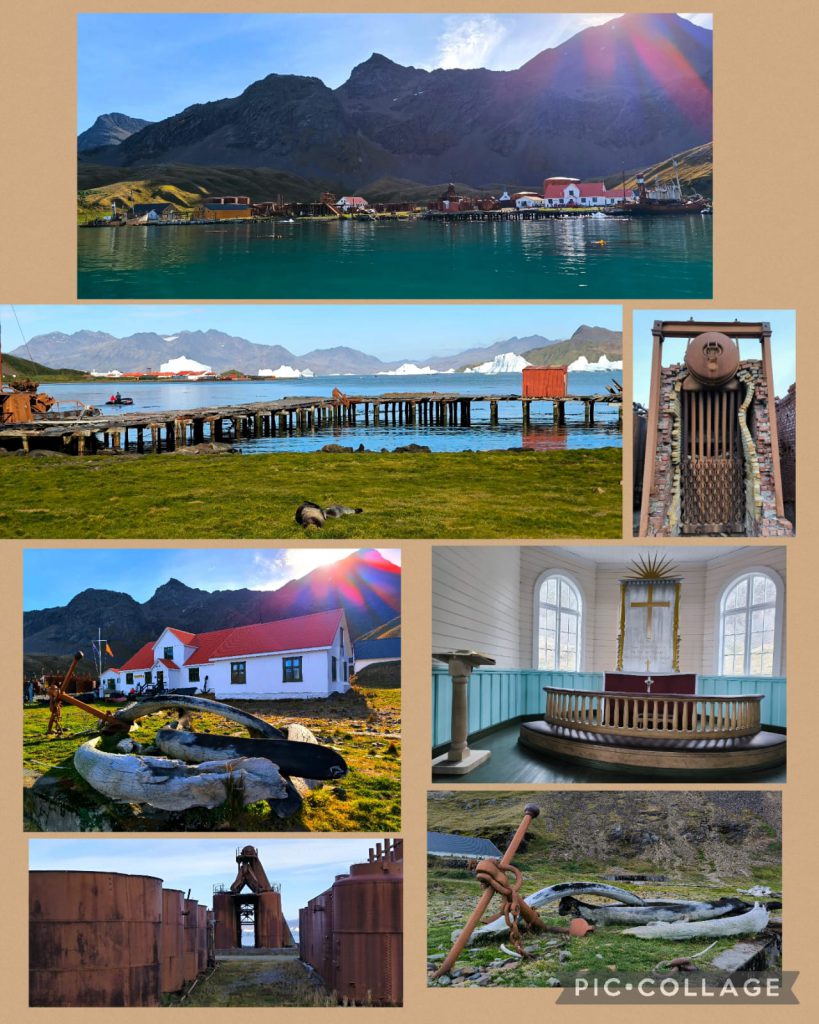Why this Expedition?
This Silver Cloud expedition with 203 passengers onboard and an expedition team of 27 goes from Puerto Williams, Chile to Walvis Bay, Namibia from March 2 to 23. During this 22-day Atlantic journey, passengers would spend about ten days visiting the Falkland Islands, South Georgia, three islands in the Tristan Archipelago (Gough and Nightingale Island, and Tristan da Cuna) and Walvis Bay. As a matter of fact, I have the fortune to travel to all these places before. But I did not see much of the Falklands owing to a storm in 1999. Our boat sailed past the Tristan Archipelago and could not land islands owing to a respiratory problem on these islands that prevented any outsiders from stepping ashore. I am have a fascination for these islands. Hence, when I saw the itinerary a year ago, I decided to join.
March 3 Sailing: My last sea journey was on Silver Explorer from Iceland to St John via Greenland in 2019. I felt at home and quickly settled down in the routine at sea. I would attend most if not all lectures at the Explore Lounge. There are four restaurants: I would enjoy a light breakfast between 8 and 9 am, take a light lunch at noon, have afternoon tea at 4 pm and cocktail at 6pm at the bar or at the recap in the Explore Lounge followed by dinner after 7 pm. I tried to spend some time at the gym everyday to work on my back and hip problem. Time passed by quickly!
March 4 Falkland Islands: New Island & West Point
Falkland Islands
The archipelago comprising East Falkland, West Falkland and 776 smaller islands with an area of 12,000 square kilometres and a population of under 3700 (2021) is a British overseas territory with internal self-governance. Port Stanley is the principal settlement. The islands have had French, British, Spanish and Argentine settlements and the British reasserted its rule in 1833 despite Argentina’s dispute. In April 1982, Argentine military forces invaded the islands and the Falkland War ended in two months later. A referendum was held in 2013, almost all Falklanders voted in favour of remaining a UK overseas territory.
We had over 200 passengers on the boat and were assigned to four different zodiac groups. Teresa and I were assigned to Group 1. Today we were the first group to go ashore a sanctuary of animal life – New Island. We disembarked at 7:30am and would return by 10 am. After walking for about 1km, I arrived at the Settlement Rookery’s cliff, a fantastic site by the South Atlantic Ocean. Shag was the most numerous bird at this site: we saw two species – imperial and rock shags. When looking carefully, I could find rockhopper and Macaroni penguins, black-browed albatross and chicks, skua, striated caracara etc. I also benefitted from the explanations by bird experts. While walking on the island or in the zodiac, I also saw steamer duck, kelp goose, upland goose, ruddy-headed goose etc.
We departed New Island after 11 am and arrived at West Point, a north-westerly outpost of the Falkland Islands, after 2:30pm. The highlight here was a visit to a huge colony of black-browed albatross in the rugged cliffs above the waves located about 2.5 km from the landing beach. On arrival, Jonathan found a small colony of Magellanic penguins at the end of the beach (less than 1km from the landing point). We therefore went over to look at these penguins. The walk was not long but the steep slopes in a few places were a challenge for people, like me who have walking problems. I forgot my walking poles which would be most useful. After watching two dozens of Magellanic penguins, we returned to the starting point and I began my march to the albatross colony. Sadly, I walked slowly with pain and was only half way at 4:45pm. Given my condition, I decided not to rush and turn back. We were all treated with tea and home-made cakes by a couple- the only residents / care-takers of the area. Their cottage is quint and lovely. They lead a truly self-sufficient life with their vegetable plot, chickens and fresh catch from the sea.
March 5 Falkland Island: Port Stanley
I was in Port Stanley for a few hours in 1999. Looking back, I would say the logistics were poorly executed by today’s standard. Passengers had to pay for a chartered flight from Santiago to Port Stanley in order to board the boat. After lunch, the boat set sailed to the Antarctic Peninsula and the group was supposed to visit Port Stanley on the way back to Ushuaia after South Georgia. Unfortunately, a bad storm prevented the boat from approaching Falkland Islands. That was my first visit to Falkland Islands.
Silversea passengers had join a 5-km hike, a battlefield bus tour or city walk. I decided to take the bus tour. It was an excellent choice that took me to learn more about the Falkland War from the British perspective. After the 2-hour tour, we were dropped off at the museum which has been vastly improved since 1999. I also visited the Cathedral before taking the zodiac back to the boat at 1:30pm. I had a great time.
March 7: Shag Rocks
Antarctic waters predominantly sink beneath the warmer subantarctic waters, while associated zones of mixing and upwelling create a zone very high in marine productivity, especially for Antarctic krill.
After sailing for almost two days, we crossed the Antarctic Convergence a marine belt encircling Antarctica with cold, northward-flowing Antarctic waters meeting the relatively warmer waters of the sub-Antarctic. This natural boundary separates two hydrological regions as well as separate areas of distinctive marine life and climates. As Antarctic waters predominantly sink beneath the warmer subantarctic waters while associated zones of mixing and upswelling create a zone very high in marine productivity, this water rich in nutrients provides abundant food for marine life.
For two hours around lunch time, we had sighting of a dozen of killer whales (orcas), 50+ fin whales and four blue whales on our way to the Shag Rocks, a group of six small islets covering an area of less than 20 hectares with the highest peak standing 75m above sea level. Located in the westernmost extreme of South Georgia (240km west of the main island), these rocks are covered by guano of seabirds mostly South Georgia shags, prions and wandering albatrosses. Boats sailing in South Georgia water can travel at a maximum speed of 10 nautical miles an hour in order cause the least disturbance to the whale population.
March 8: Salisbury Plain & Possession Bay, South Georgia
We sailed into the iconic Salisbury Plain soon after a beautiful sunrise. I was surprised to find icebergs in all direction. My first visit when I saw millions of king penguins on the plain in 1999 always brings sweet memories. Unfortunately because of Avian Flu, visitors are not allowed ashore. Instead we had a zodiac cruise which gave a totally different experience. The weather was perfect and the landscape was surreal and stunning. More interesting was to find and watch king penguins standing on icebergs sliding down and swimming round the icebergs. They all seemed to have a fun time!
After an unforgettable zodiac cruise, we stayed on board enjoying the sun and the icebergs. We were all blissful. In the afternoon, we had our first landing in the Possession Bay where we saw a colony with a few thousand pairs of king penguins. I was honoured to take a photo with Peter Harris who is an authority on seabirds. In addition to fur seals, we also found a small colony of gentoo penguins. There was so much to see and I did not want to leave: I was the last passenger to get on the zodiac at 5:30pm.
March 9: Fortuna Bay & Grytviken, South Georgia
We were blessed with good weather. Today, we had a gorgeous sunrise and things looked promising. Then the expedition team found the wind too strong to land on the Fortuna Bay as planned. The Captain repositioned the boat to a nearby more sheltered cove so that we could land and stretch our our legs for 45 minutes. Though there might be fewer king penguins, I had a great time strolling along the bay, watching Northern and Southern Giant Petrels and chicks, elephant seals and fur seals in addition to hundreds of king penguins and a couple of gentoo penguins. We had a tight schedule and had to set sail for Grytviken before noon.
The fine weather continued when we sailed into King Edward Cove. Grytviken was a whaling station established on November 1904 by the Norwegian sea captain Carl Anton Larsen. During its heyday, about 300 men worked at the station. Explorer Ernest Shackleton added fame to Grytviken when he arrived here after an incredible and almost impossible journey from the Elephant Island in order to organise a recue operation for all his men sailing on the Endurance. He returned to Grytviken in 1922 where he died of heart attack on January 5 and was buried.
The place is full of history. I could either join a 5-6km walk to the lake or join a short guided walk. Given my condition, I was on a slow lane and joined a guided walk. When I visited here in 1999, I could walk at leisure and visit his grave. The place is now preserved with more restriction on visitors who are no longer allowed to walk to his final resting place to pay tribute.
When we returned to the boat, the Captain broke the news that owing to the iceberg situation and weather conditions, the boat would not proceed with the original plan to spend two more days in South Georgia. By getting to Tristan da Cunha archipelago two days earlier, we could avoid bad weather in both locations. I love to stay longer in South Georgia. But if the weather is bad, it is not possible to do outdoor activities as planned any way. So we sailed northeast.


